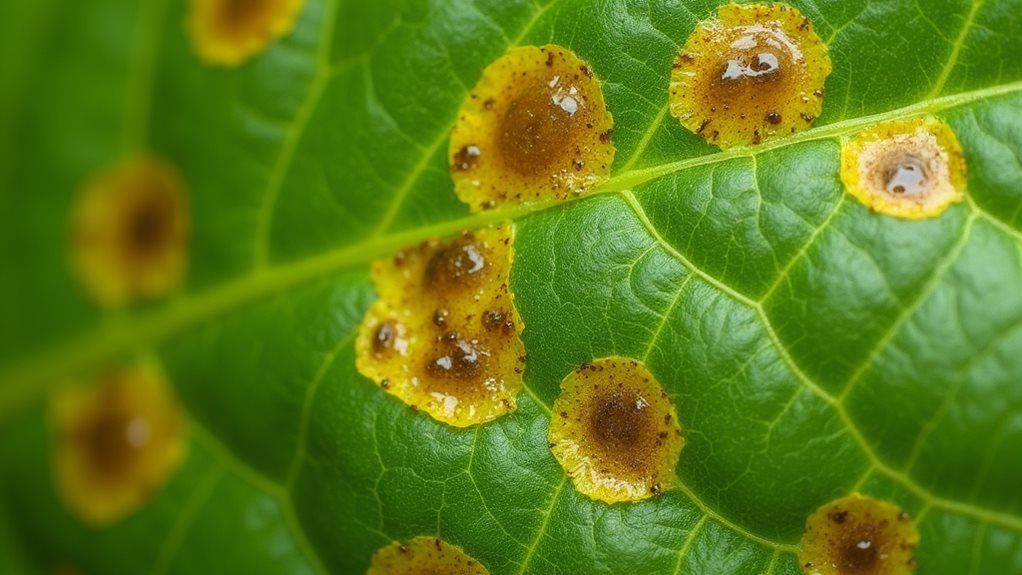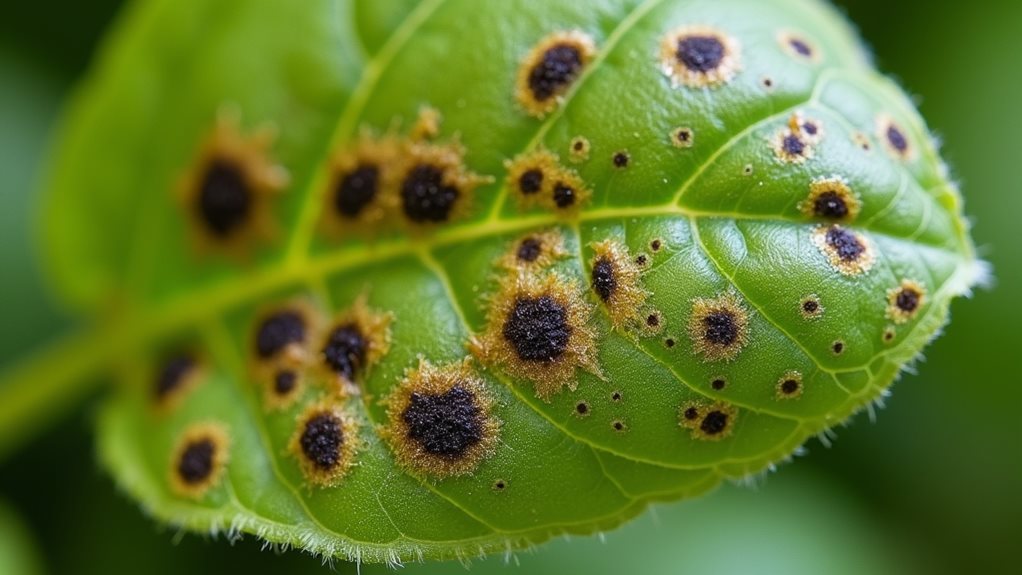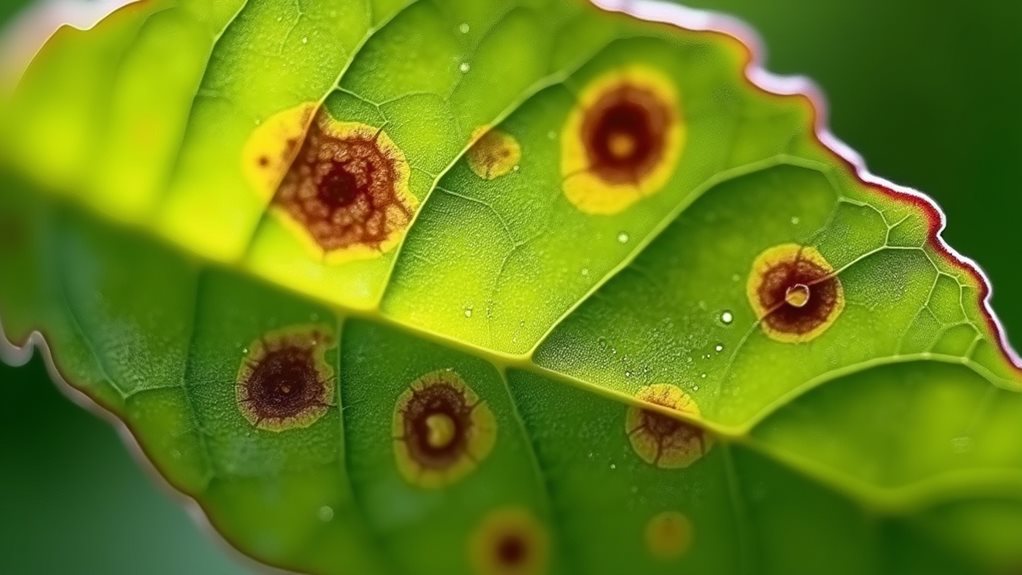Brown spots on your basil leaves can stem from several common issues, including temperature stress, overwatering, disease, or pest damage. If your plants experience temperatures below 70°F or above 90°F, you'll likely notice discoloration. Poor drainage and excessive moisture often lead to root problems and leaf browning, while fungal diseases like Fusarium wilt can cause similar symptoms. Pest infestations and nutrient deficiencies may also result in spotted foliage. To address these problems, you'll need to maintain proper watering practices, guarantee good air circulation, and monitor environmental conditions. Understanding the specific cause will help you implement the most effective solution for your situation.
TLDR
- Temperature fluctuations outside 70-90°F can cause brown spots on basil leaves as the plant becomes stressed.
- Overwatering and poor drainage create root problems that manifest as brown spots on leaves.
- Fusarium wilt disease causes browning and is incurable, requiring immediate removal of affected plants.
- Inadequate spacing between plants reduces airflow and increases humidity, leading to fungal diseases and brown spots.
- Pest infestations, particularly from aphids and spider mites, can damage leaf tissue and create brown spots.
Common Causes of Brown Spots

While growing basil can be rewarding, brown spots on leaves often signal underlying issues that need attention.
Temperature fluctuations, particularly exposure to cold below 70°F or excessive heat above 90°F, can trigger leaf discoloration. Fusarium wilt has no cure once established in the plant. Additionally, improper watering practices, especially overwatering and poor drainage, commonly lead to brown spots, while nutrient deficiencies and pest infestations may also be culprits. Understanding the importance of animal protection laws can help prevent unintended consequences when managing plants in shared environments.
Disease Prevention and Control
Effective disease prevention in basil starts with a multi-layered approach combining cultural practices, proper sanitation, and environmental controls. Improving soil quality by adding organic matter can also enhance plant health and resistance to diseases.
You'll need to maintain proper spacing between plants, use drip irrigation to keep leaves dry, and monitor humidity levels carefully. For added protection, consider planting resistant varieties like 'Prospera' or 'Rutgers Devotion', and remove any infected foliage immediately to prevent disease spread. Yearly rotation of basil planting locations helps prevent soil-borne diseases from taking hold in your garden.
Pest Management Solutions

A thorough pest management strategy is essential for protecting your basil plants from common garden invaders.
You'll need to identify specific pests like aphids, Japanese beetles, or spider mites before implementing targeted solutions. Balanced nutrition is crucial not just for pets like guinea pigs but also for plants, as it helps them resist pest infestations. Try using organic controls such as neem oil or insecticidal soap, and don't forget physical barriers like row covers to prevent pest damage before it starts. Regular monitoring at night can help detect earwigs and other nocturnal pests that may be damaging your plants.
Environmental Factors to Consider
Beyond pest control, your basil's environment plays a major role in preventing brown spots on the leaves.
Temperature fluctuations between 70-90°F and proper sun exposure are essential, as intense sunlight can cause scorching. Potted herbs are especially vulnerable to heat damage compared to garden-planted varieties.
You'll need to monitor watering carefully, as both over and underwatering lead to brown spots.
Consider providing afternoon shade and maintaining consistent soil moisture for ideal growth.
Plant Care Best Practices

Through proper plant care practices, you'll considerably reduce the risk of brown spots on your basil leaves.
Water your plants at the base rather than overhead, ensuring about one inch of water weekly while maintaining good drainage.
Regularly harvest shoot tips and remove damaged leaves, keeping the plant bushy and healthy.
For fertilization, opt for balanced liquid fertilizers, avoiding synthetic ones that could cause nitrogen burn. Additionally, regular monitoring of plant health, including signs of nutrient deficiencies, is crucial for ensuring thriving basil plants.
And Finally
Keeping your basil plants healthy requires consistent monitoring and proper care techniques. You'll need to maintain ideal growing conditions, including adequate spacing between plants, proper watering practices, and good air circulation. By identifying brown spots early and implementing the appropriate disease prevention measures, pest control solutions, and environmental adjustments we've discussed, you're well-equipped to grow thriving, disease-resistant basil plants in your garden.